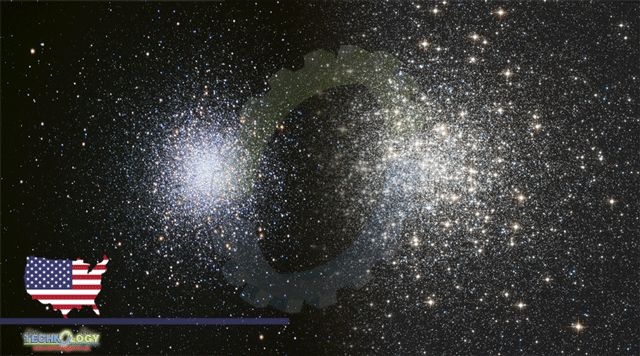Using high-resolution observational of two very similar globular clusters, Messier 3 and Messier 13, astronomers have found an unexpected overabundance of bright white dwarfs in Messier 13. Theoretical models suggest that this overabundance is due to a slowing down of the cooling process in around 70% of the white dwarfs in Messier 13, caused by stable thermonuclear burning in their residual hydrogen-rich atmosphere.

White dwarfs are core remnants of low-mass stars that have concluded their thermonuclear activity.
All stars with masses below 8 solar masses, with a possible extension up to 11 solar masses, are expected to end their evolution as white dwarfs.
Their study provides a large amount of information on the physical properties and the evolution of their progenitors, which constitute roughly 98% of all the stars in the Universe.
“We have found the first observational evidence that white dwarfs can still undergo stable thermonuclear activity,” said Dr. Jianxing Chen, an astronomer at the Alma Mater Studiorum Università di Bologna and the Italian National Institute for Astrophysics.
“This was quite a surprise, as it is at odds with what is commonly believed.”
To investigate the physics underpinning white dwarf evolution, Dr. Chen and colleagues compared cooling white dwarfs in Messier 3 and Messier 13.
These two massive globular clusters share many physical properties such as age and metallicity but the populations of stars which will eventually give rise to white dwarfs are different.
In particular, the overall color of stars at an evolutionary stage known as the horizontal branch are bluer in Messier 13, indicating a population of hotter stars.
This makes Messier 3 and Messier 13 together a perfect natural laboratory in which to test how different populations of white dwarfs cool.
Using data from the Wide Field Camera 3 (WFC3) instrument aboard the NASA/ESA Hubble Space Telescope, the astronomers found 418 and 284 white dwarfs in Messier 3 and Messier 13, respectively.
They found that Messier 3 white dwarfs are simply cooling stellar cores.
Messier 13, on the other hand, contains two populations of white dwarfs: standard white dwarfs and those which have managed to hold on to an outer envelope of hydrogen, allowing them to burn for longer and hence cool more slowly.
Comparing their results with computer simulations of stellar evolution in Messier 13, the researchers were able to show that roughly 70% of the white dwarfs in Messier 13 are burning hydrogen on their surfaces, slowing down the rate at which they are cooling.
“Some theoretical models for slowly cooling white dwarfs have been computed in the past, proposing that the reason for this slowdown is the existence of a very thin residual hydrogen-rich shell (of the order of 0.0001 solar masses) that, in principle, can still be present around the dense core of the white dwarf and quietly produce energy,” said Professor Leandro Althaus, an astronomer at the Universidad Nacional de La Plata Argentina.
“Our discovery challenges the definition of white dwarfs as we consider a new perspective on the way in which stars get old,” said Dr. Francesco Ferraro, also from the Alma Mater Studiorum Università di Bologna and the Italian National Institute for Astrophysics.
“We are now investigating other clusters similar to Messier 13 to further constrain the conditions which drive stars to maintain the thin hydrogen envelope which allows them to age slowly.”
Originally Published At SciNews